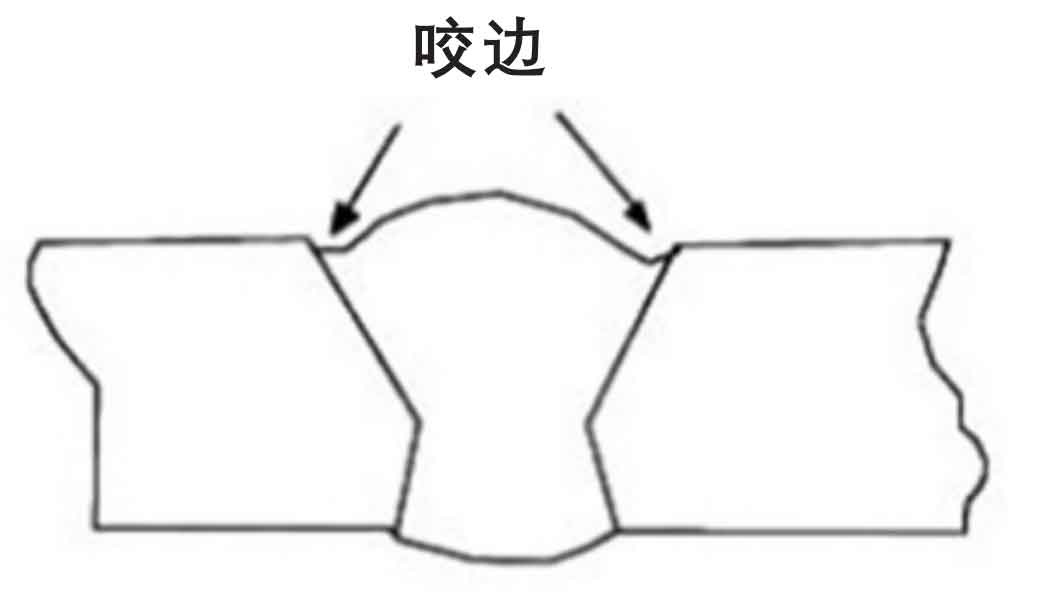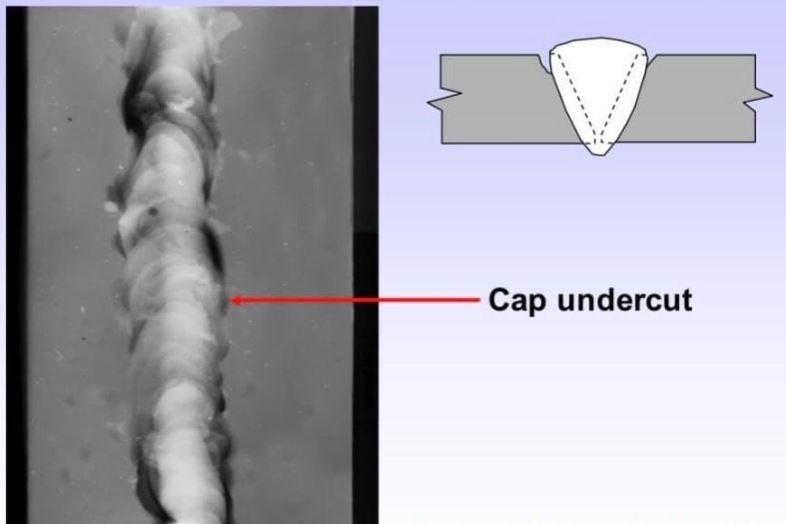Preventing Weld Undercut Made Easy: Key Techniques Unveiled
Preventing Weld Undercut Made Easy: Key Techniques Unveiled
Blog Article
Essential Tips for Welders: Stopping Undercut Welding and Ensuring Stronger Weld Joints
In the realm of welding, attaining durable and solid weld joints is the foundation of generating high-grade job. Nonetheless, one usual challenge that welders often run into is undercut welding, which can jeopardize the honesty of the weld joint. By comprehending the variables that add to undercutting and carrying out the right techniques and precautions, welders can effectively prevent this issue and make sure the long life and strength of their welds. Allow's explore some important suggestions that can assist welders browse this obstacle and boost the quality of their welding projects.

Comprehending Undercut Welding
Undercut welding is an usual welding issue that happens when the weld metal stops working to correctly fill up the groove and causes a groove-like clinical depression along the weld bead. This defect compromises the weld joint, making it prone to fracturing and failure under tension. Damaging can be brought on by numerous aspects, including too much welding present, high welding rate, incorrect electrode angle, wrong electrode size, and bad welding strategy.
Among the major factors for undercut welding is an imbalance between the welding current and the welding rate. If the welding current is expensive or the welding rate is also quick, the weld steel may not adequately fill up the groove, bring about damaging. Additionally, using an electrode that is also huge can lead to a similar end result, as the excess metal can not correctly flow right into the groove.
To avoid undercut welding, welders should guarantee they are utilizing the appropriate welding criteria, preserve an ideal electrode angle, pick the suitable electrode size, and technique proper welding techniques. By resolving these aspects, welders can reduce the danger of undercutting and develop more powerful, more reliable weld joints.
Appropriate Welding Strategy
Effective welding strategy plays a crucial duty in ensuring the quality and integrity of weld joints. One basic element of correct welding method is preserving the correct angle and distance between the welding weapon and the workpiece.
Additionally, a consistent and constant hand motion is necessary for developing solid and durable weld joints. Welders ought to go for smooth, consistent movements to make sure also circulation of the weld product. Correct adjustment of the welding weapon and filler material is also key to achieving optimal infiltration and fusion.
Additionally, regulating the warmth input and choosing the appropriate welding parameters based on the product being bonded are crucial variables in accomplishing top notch welds - Preventing weld undercut. Welders need to follow the recommended settings offered by welding procedure specifications and change them as required based upon the details requirements of the task. By grasping proper welding techniques, welders can substantially boost the strength and integrity of their weld joints
Picking the Right Electrode
Maintaining the correct angle and range in between the welding gun and the work surface is fundamental when taking into consideration the significance of picking the best electrode in welding applications. The option of electrode plays a crucial function in figuring out the high quality and stamina of the weld joint. Electrodes can be found in numerous kinds, each made for certain functions and products.
First of all, picking the ideal electrode size is vital. Thinner electrodes are appropriate for welding thin materials, while thicker electrodes are much better for thicker materials and higher heat applications. Matching the electrode size to the thickness of the work surface helps attain a well balanced weld.
Secondly, comprehending the material composition of the electrode is essential. Different electrodes are developed for welding details products like steel, stainless steel, light weight aluminum, or cast iron. Using the appropriate electrode material makes sure great blend and decreases the danger of problems in the weld.
Lastly, thinking about the welding position and strategy is essential when picking the electrode type. Particular electrodes are better suited for vertical or overhead welding positions, while others work well for level or straight settings. Selecting the appropriate electrode based on the welding technique enhances the general weld top quality and honesty.
Preparing the Base Metal
To guarantee an effective welding procedure, what preliminary actions should be taken when preparing the base metal for welding? Correctly preparing the base metal is vital for accomplishing solid and long lasting weld joints. The very first step in preparing the base metal is to clean it thoroughly to get rid of any kind of contaminants such as rust, dust, paint, or oil. This can be done useful site making use of a cord brush, a fantastic read grinder, or chemical solvents. Additionally, any type of existing weld product or residue from previous welding must be gotten rid of to guarantee a tidy surface for the new weld.

Conducting Post-Weld Evaluations

After conducting these analyses, welders must compare the results against sector criteria and project demands to guarantee that the weld joint meets all necessary criteria. Any type of inadequacies or discrepancies found throughout the post-weld assessment should be quickly attended to with ideal corrective steps to guarantee the weld's integrity. By diligently executing post-weld inspections and quickly addressing any kind of problems, welders can promote the high quality and integrity of their job, eventually contributing to the safety and security and longevity of the bonded frameworks.
Verdict

In conclusion, protecting against undercut welding additional info and making sure stronger weld joints need a mix of proper welding strategy, choosing the right electrode, preparing the base metal appropriately, and conducting post-weld examinations. By understanding the sources of undercut welding and carrying out the needed precautions, welders can create top notch weld joints that satisfy sector criteria and ensure the architectural honesty of the welded elements.
Undercut welding is an usual welding defect that happens when the weld metal stops working to properly fill up the groove and results in a groove-like clinical depression along the weld bead (Preventing weld undercut). Undercutting can be created by different factors, including extreme welding present, high welding rate, improper electrode angle, wrong electrode dimension, and bad welding strategy
One of the main factors for undercut welding is an imbalance between the welding present and the welding speed. If the welding current is as well high or the welding speed is as well fast, the weld steel may not effectively fill up the groove, leading to undercutting.Keeping the right angle and range in between the welding gun and the work surface is fundamental when thinking about the value of choosing the appropriate electrode in welding applications.
Report this page